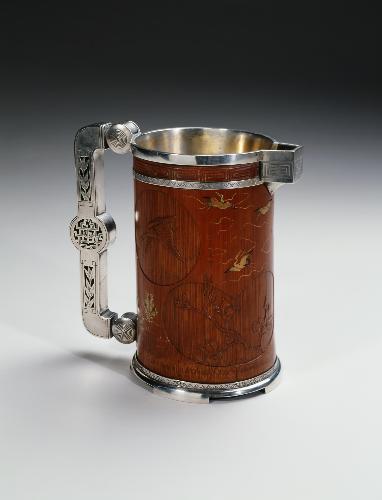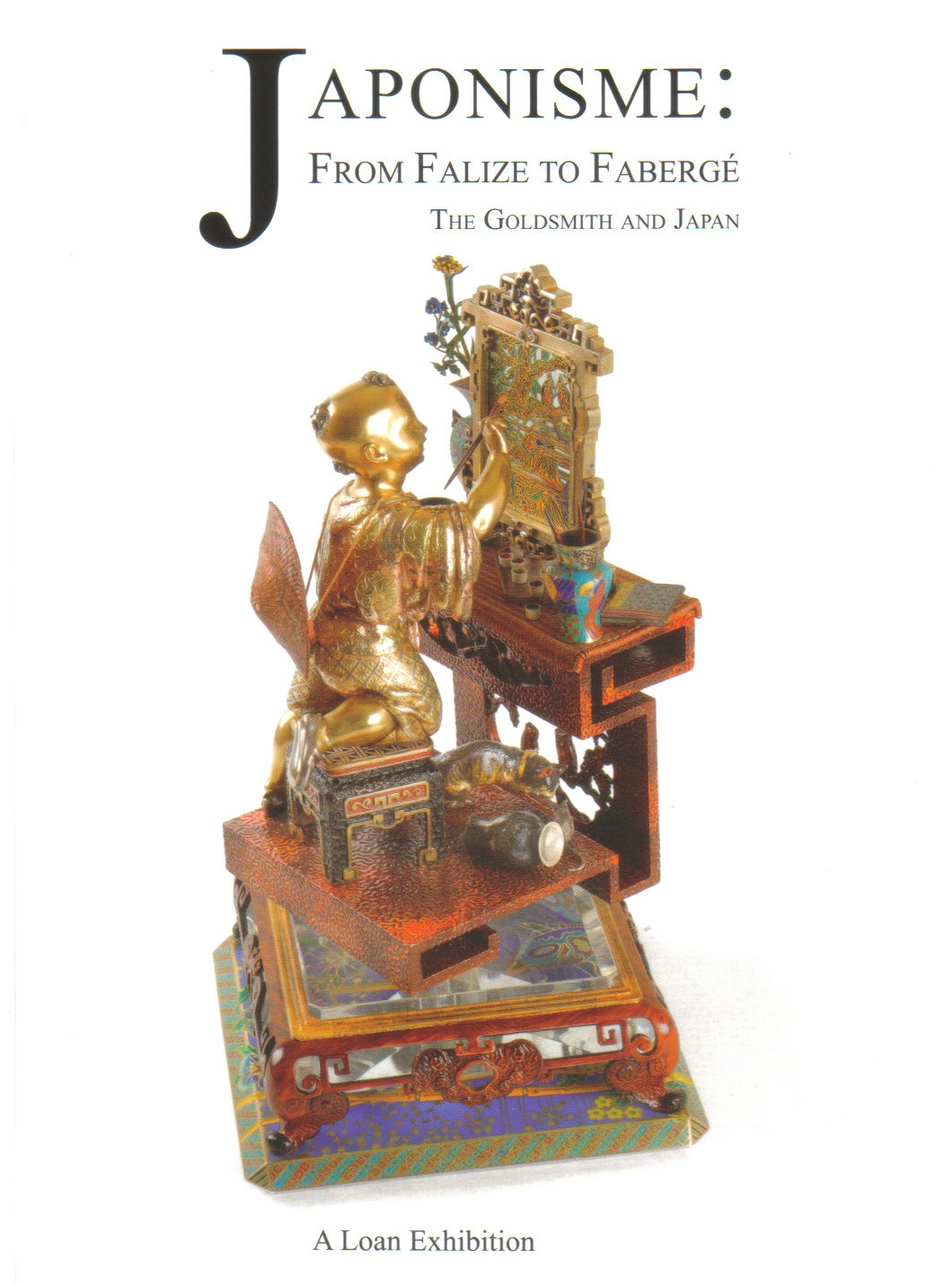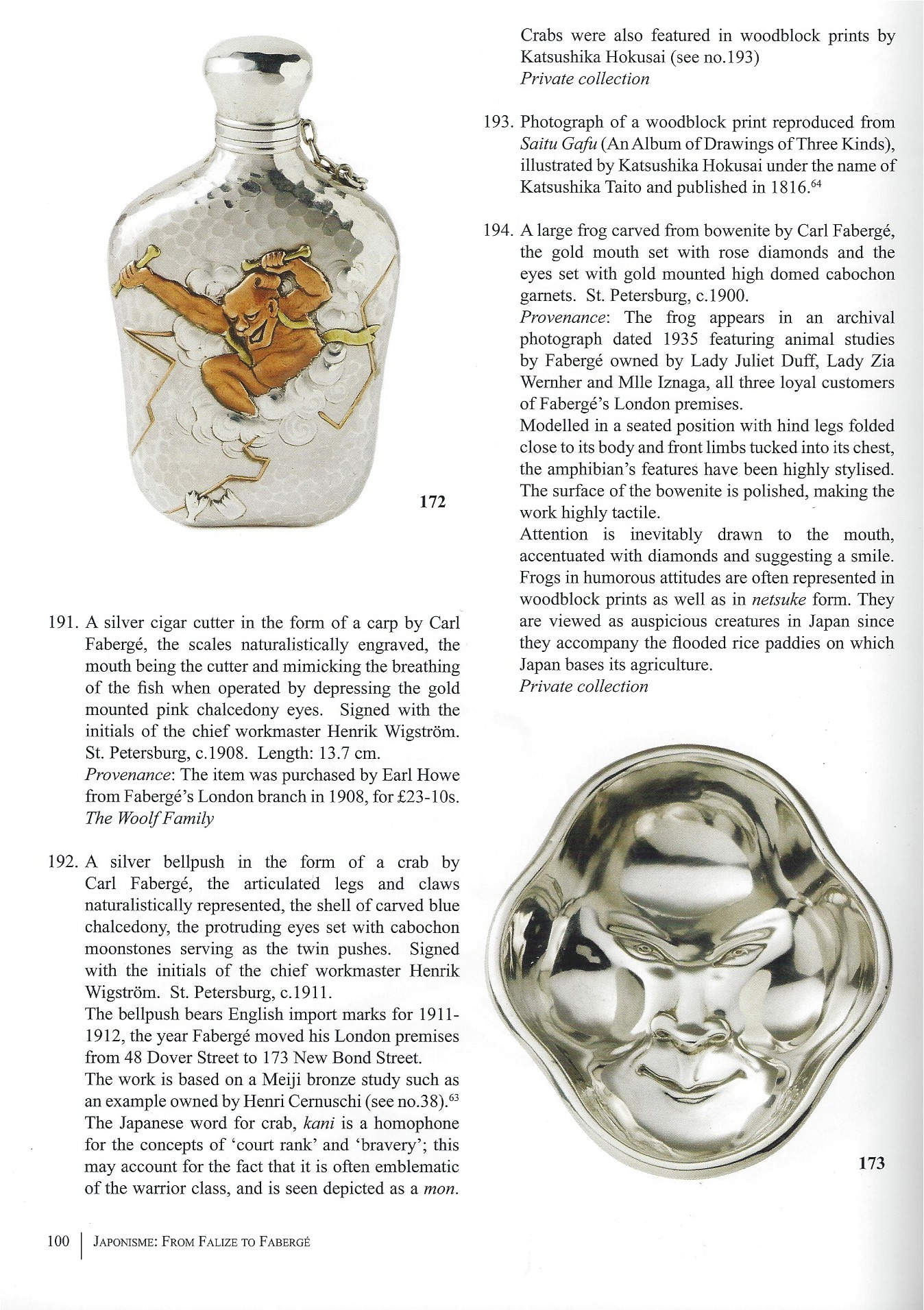The bamboo and lacquer brush-pot by Numata Kouzan
The silver by Henry William Dee, London, 1877
The silver stamped with the mark of Henry William Dee, London, 1877, the base engraved 23 Bl des Capucines Paris JONES. 44 St. James’s St. London
7 ½ in (19.1 cm) high, 7 in (17.8 cm) wide
cf. John Culme, The Directory of Gold and Silversmiths, Vol. I, 1987, p. 116Established in the late 1820s by Thomas William Dee (1792-1869), the firm of Thomas William Dee & Son ran in partnership with Thomas’s son, Henry William Dee (1823-1896) beginning from 1854. Another of Thomas’s sons, Louis Dee joined the firm in 1859 after which the business was restyled Thomas William Dee & Sons. Their premises were moved in 1862 to 8 Sherwood Street, Golden Square, Soho. Following Thomas’s retirement in 1867, the firm’s name was changed to H.W. & L. Dee at which time they were described as jewellers and silversmiths.
The firm’s designs and workmanship in silver were characterised by their excellent quality. Henry William Dee, in particular, holds a particular place in 19th-century silver design. He produced a range of unique and interesting pieces, including dishes in the Japanese taste formed as Noh theatre masks (for an illustration of this piece see Japonisme: From Falize to Fabergé, exh.cat., Wartski, London, 2011, p.100, no.173), cream jugs with animal handles, and curious mounted bottles. Unusual silver novelty pieces of this type were regularly made for Garrard, Leuchars & Son, and Asprey, as well as other retail goldsmiths. The patterns for many were registered as copyright and the designs of Henry William Dee are held in the UK National Archives.
With this piece, Dee turned a Japanese carved bamboo brush pot with lacquer decoration into a jug by adding a silver rim with a spout, base and handle. The practice of incorporating Asian objects into newly fashioned western forms dates back to the 16th-century. There was a revival of this practice during the 1870s when the Japanese arts directly influenced the work of western artists and manufacturers.Dee’s ‘japoniste’ design respected the origins of the brush pot, as his handle and rim include several Asian motifs.
A comparable bamboo, lacquer and silver-mounted pitcher may be found in the Carnegie Museum of Art, Pittsburgh.





















